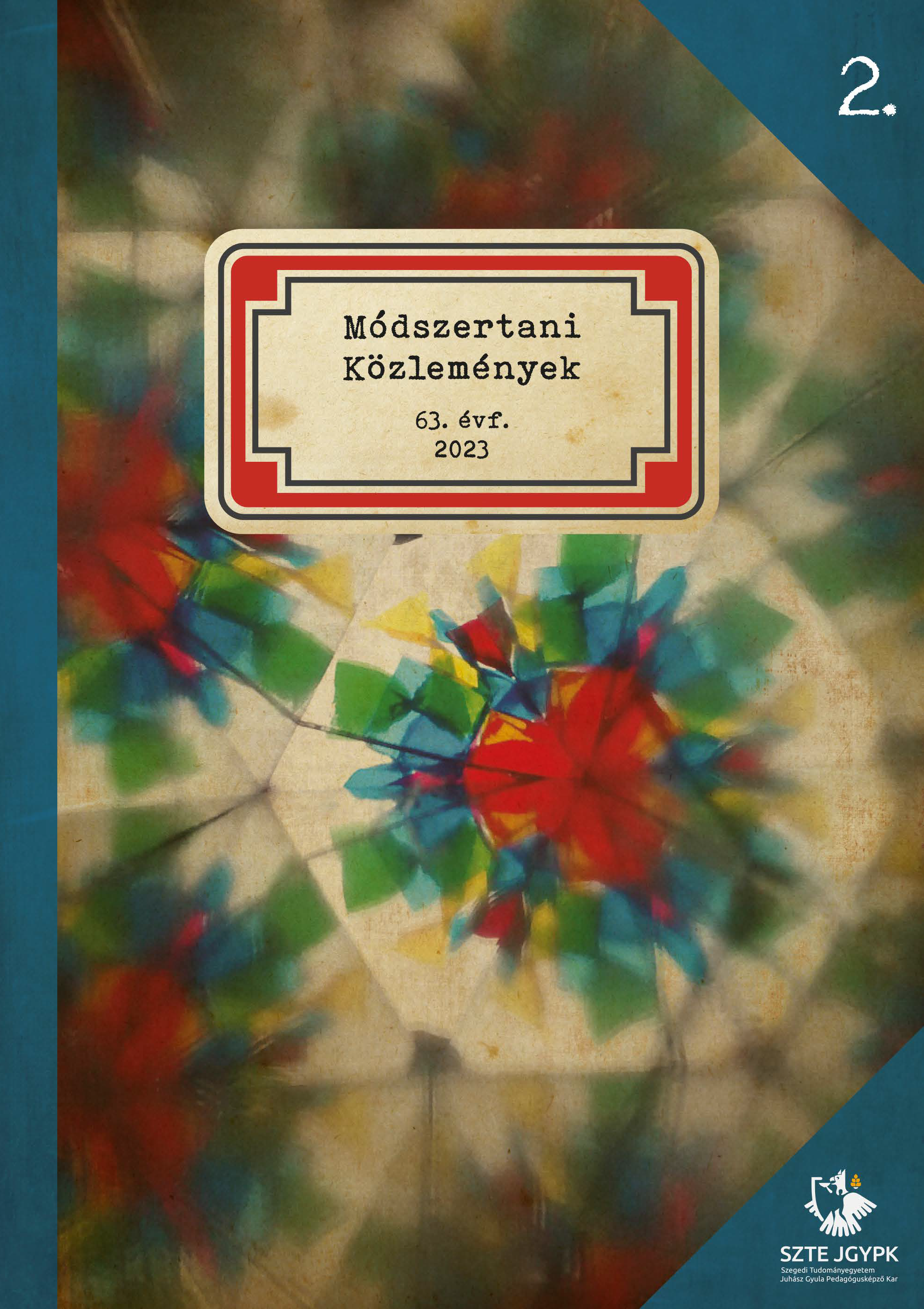A csőfonáció alkalmazása a logopédiai munkában
Main Article Content
Absztrakt
A félig-zárt fonációs módszerek Európában nagy múltra tekintenek vissza, ezek közé soroljuk a csőfonációt is (Guzman, 2017). Csőfonáláskor a hangképzés egy csőbe történik. A cső szabad vége merülhet vízbe, vagy a levegőben is tarthatjuk. Magyarországon a csőfonációs technikák még kevéssé terjedtek el. Talán ez oka, egyben következménye is annak, hogy magyar nyelvű szakirodalom csak elvétve található a témával kapcsolatban. Ez a munka ennek az űrnek a kitöltésére tesz kísérletet. A tanulmány elején ismertetjük azokat az elméleti tudnivalókat, amelyek elengedhetetlenek a csőfonáció hatásmechanizmusának megértéséhez, majd bemutatjuk a csőfonációs technika működését, hatásait, felhasználási módjait és szükségességét.
Article Details
Hivatkozások
Andrade, A. P., Wistbacka, G., Larsson, H., Södersten, M., Hammarberg, B., Simberg, S., Švec, J. G. és Granqvist, S. (2016): The flow and pressure relationships in different tubes commonly used for semioccluded vocal tract exercises. Journal of Voice, 30. 1. sz. 36–41.
Bajnócziné Szucsák Klára, Bihari Adél, Kiss B. Ilona, Szentkúti Gabriella és Tamás László (2016): A csőfonáció, mint hangterápiás módszer, és alkalmazása során nyert rövidtávú eredmények bemutatása. Magyar Fonetikai Foniátriai és Logopédiai Társaság Kongresszusa, Budapest.
Balázs Boglárka (2009): Diszfónia, a beszéd betegsége. Fejlesztő Pedagógia, 20. 2. sz. 20−22. Balázs Boglárka és Bóna Judit (2016): Életkori sajátosságok a beszédképzésben és a beszédfeldolgozásban. In: Bóna Judit: Fonetikai olvasókönyv. ELTE Fonetikai Tanszék, Budapest. 7−18.
Enflo, L., Sundberg, J., Romedahl, C. és McAlister, A. (2013): Effects on vocal fold collision and phonation threshold pressure of resonance tube phonation with tube end in water. Journal of Speech, Language and Hearing Research, 56. sz. 1530−1538.
Fischer Sándor (1969): A beszéd művészete. Gondolat Kiadó, Budapest. Frint Tibor (1982): A hangképzés zavarai. In: Frint Tibor és Surján László (szerk.): A hangképzés és zavarai, beszédzavarok. Medicina Könyvkiadó, Budapest. 117−155.
Gósy Mária (2004): Fonetika, a beszéd tudománya. Osiris Kiadó, Budapest. Granquist, S., Simberg, S., Hertegard, S., Holmqvist, S., Larsson, H.,
Lindestad, P., Södersten, M. és Hammarberg, B. (2015): Resonance tube phonation in water: High-speed imaging, electroglottographic and oral pressure observations of vocal fold vibrations − a pilot study. Logopedics Phoniatrics Vocology, 40. 3. sz. 113−121.
Guzman, M. (2017): Semioccluded Vocal Tract Exercises − A physiologic approach for voice training and therapy. University of Tampere. Academic Dissertation.
Tampere. Hacki Tamás (2013): A beszéd- és énekhangképzés fiziológiája, akusztikája, patológiája és terápiája. In: Hirschberg Jenő, Hacki Tamás és Mészáros Krisztina: Foniátria és társtudományok I. A hangképzés, a beszéd és a nyelv, a hallás és a nyelés élettana, kórtana, diagnosztikája és terápiája. ELTE Eötvös Kiadó, Budapest. 85−258.
Kassai Ilona (2005): Fonetika. Nemzeti Tankönyvkiadó, Budapest. Kelemen Márta (2018): A beszédtechnika helye a Magyar nyelv gimnáziumi oktatásában. Szakdolgozat. Pécsi Tudományegyetem Bölcsészettudományi Kar Nyelvtudományi Tanszék, Pécs.
Laukkanen, A. M., Pulakka, H., Alku, P., Vilkman, E., Hertegård, S., Lindestad, P. A., Larsson, H., Granqvist, S. (2007): High-speed registration of phonation-related glottal area variation during artificial lengthening of the vocal tract. Logoped Phoniatr Vocol. 32. 4. sz. 157−64.
Shivo, M. (2017): History of the LAX VOX®-tube exercise. QUICK First-Aid and Vocal Self Care. AP Lambert Academic Publishing, Mauritius.
Shivo, M. és Denizoglu, I. (2014): Lax Vox Voice therapy Technique. https://www.laxvox.com/ technique/ (2023.02.26.)
Shivo, M. és Denizoglu, I. (2019): doktorVOX R&D in Vocology. https://www.doctorvox.com/ what-is-doctorvox/ (2023.02.26.)
Simberg, S. és Laine, A. (2007): The resonance tube method in voice therapy: Description and practical implementations. Logopedics Phoniatrics Vocology, 32. 4. sz. 165−170.
Titze, I. R. (2006): Voice Training and Therapy With a Semi-Occluded Vocal Tract: Rationale and Scientific Underpinnings. Journal of Speech Language and Hearing Research, 5. 448−459.

